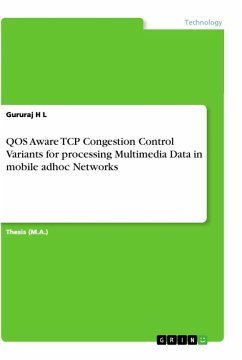
Physically Aware Agile Optical Networks
Concepts, Methods, and Algorithms
Versandkostenfrei!
Versandfertig in 6-10 Tagen
52,99 €
inkl. MwSt.

PAYBACK Punkte
26 °P sammeln!
With the development of new laser sources, fiberamplifiers, and other optical components, opticalcommunication systems have undergone enormous growthand evolution in recent decades. The current trend ofoptical networking is to move towards dynamic,all-optical networks. In all-optical networks,information signals are transmitted from source todestination totally in the optical domain, withoutthe usual optical-electrical-optical conversions atintermediate nodes. New challenges and opportunitiesemerge in different layers of the optical networkarchitecture in this transition process. This bookexpl...
With the development of new laser sources, fiber
amplifiers, and other optical components, optical
communication systems have undergone enormous growth
and evolution in recent decades. The current trend of
optical networking is to move towards dynamic,
all-optical networks. In all-optical networks,
information signals are transmitted from source to
destination totally in the optical domain, without
the usual optical-electrical-optical conversions at
intermediate nodes. New challenges and opportunities
emerge in different layers of the optical network
architecture in this transition process. This book
explores several interesting topics in both the
physical layer and the network layer of all-optical
networks. Our studies examine physical impairments
which can adversely influence network performance.
Both novel proactive and reactive approaches are
proposed to improve network performance and provide
quality of service (QoS) for users. The proposed
methods and algorithms can be especially useful to
professionals, students, and researchers working in
the field of optical communications.
amplifiers, and other optical components, optical
communication systems have undergone enormous growth
and evolution in recent decades. The current trend of
optical networking is to move towards dynamic,
all-optical networks. In all-optical networks,
information signals are transmitted from source to
destination totally in the optical domain, without
the usual optical-electrical-optical conversions at
intermediate nodes. New challenges and opportunities
emerge in different layers of the optical network
architecture in this transition process. This book
explores several interesting topics in both the
physical layer and the network layer of all-optical
networks. Our studies examine physical impairments
which can adversely influence network performance.
Both novel proactive and reactive approaches are
proposed to improve network performance and provide
quality of service (QoS) for users. The proposed
methods and algorithms can be especially useful to
professionals, students, and researchers working in
the field of optical communications.












